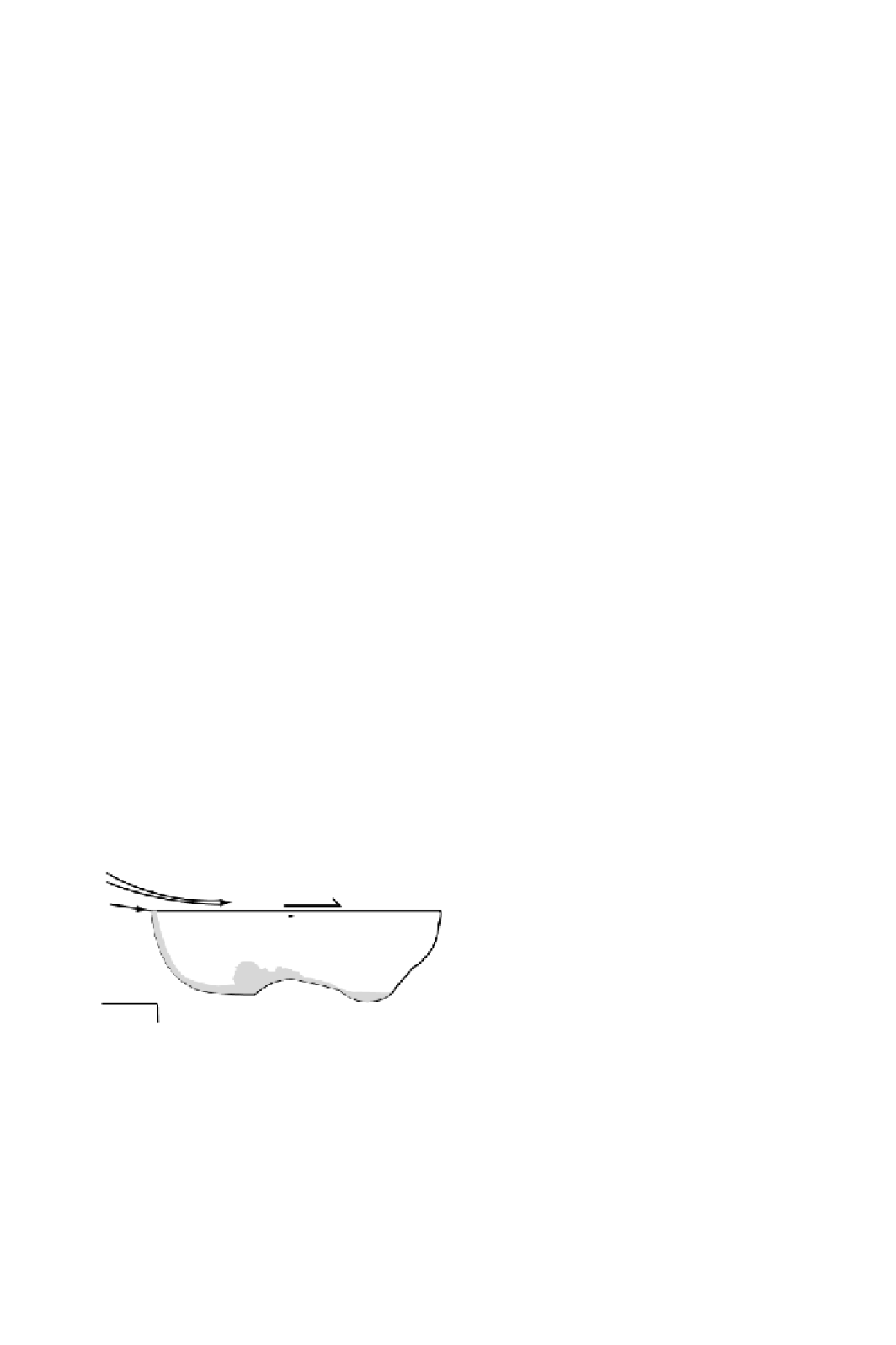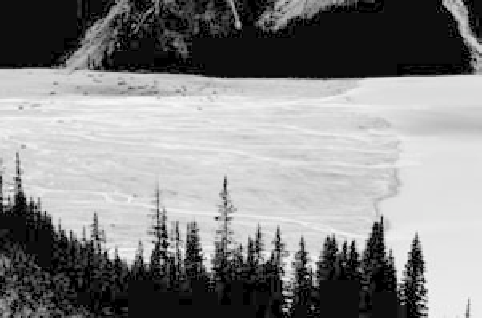Geoscience Reference
In-Depth Information
maximum temperature gradient. Most heat is trapped in
the surface epilimnion until, in autumn, cooling from the
water surface downward causes density inversions and
mixing of the epilimnion with the deep hypolimnion.
Melting of winter ice causes wholesale sinking of cold sur-
face water, giving rise to the
spring overturn
. In early
spring the water of a moderately deep lake will all be at a
temperature of approximately 4
Concerning input fluxes, water and sediment come at
point sources via river outlets. Only a small proportion of
surface runoff enters a lake as surface jets. Due to the gen-
erally higher density of cooler inflowing water,
hyperpycnal
underflows
(Sections 4.12, 6.6.5) and turbidity currents are
very common in lakes (Fig. 6.61). The underflows bring
oxygenated water into the deep hypolimnion and prevent
permanent stagnation in deep lakes. Proximity to source is a
fundamental control on the nature of lake mixing with
external sources. Successively finer sediment will be
deposited outward from the point source, although this
regular pattern is affected by surface currents due to direct
wind shear
(Figs 6.61 and 6.62; Box 6.1). Density current
development is hindered by turbulent dissipation in very
shallow, well-mixed lakes with gently sloping margins. In
thermally stratified lakes the density of the inflowing water
may be greater than that of the lake epilimnion but less than
that of the hypolimnion, so that the density current moves
along the top of the metalimnion as an
interflow
. High con-
centrations of suspended sediment at this level may then be
dispersed over the lake by wind-driven circulation.
Away from river influxes, water movement in lakes is
controlled entirely by wind-driven progressive waves and
gradient currents (Fig. 6.62). Gradient currents have the
ability to interact with turbidity undercurrents in an inter-
esting way (Fig. 6.61). Wind-driven surface waves effec-
tively mix the upper levels of lake-water and give rise to
wave currents along shallow lake margins. The size and
effectiveness of lake waves depend upon the square root of
the fetch of the lake winds and therefore on the physical
size of the lake itself. The energy associated with traveling
waves is dissipated along the shoreline as the waves break.
Internal waves (Section 4.9.6) may also form at the
epilimnion-metalimnion interface. A steady wind causes a
C. The topmost waters
will be gradually warmed by solar radiation and mixed
downward by wind action. As heating continues the warm
surface water become buoyant, resisting wholesale mixing
to remain above colder deeper water. The process of over-
turn in thermally stratified lakes causes the production of
alternating annual sediment- and organic-rich laminae;
these are termed
varves
.
There are a large number of variations in lake circulation
and stratification recognized by limnologists. Some of
these, applied to lakes deep enough to form a
hypolimnion, are summarized below:
Amictic
- lakes permantely isolated from the atmosphere
by ice cover.
Cold
monomictic
-
4
C; one period of circulation in
the summer.
Cool
dimictic
- Lake-water freely circulates twice yearly
in spring and autumn (described earlier).
Warm
monomictic
- greater than 4
C; freely circulating
in the winter and stratifying directly in the summer.
Oligomictic
C;
stable stratification with small temperature versus depth
variations.
Polymictic
- common circulation due to strong winds
and/or strong short-term temperature variations.
Meromictic
- a
pycnocline
separates near-permanent
saltier bottom water from the main water mass.
- rare circulation; greater than 4
(sp - Surface plume)
Strong katabatic wind
Glacial
meltwater
τ
o
sp
sp
Wind shear drift current
sp
sp
Underflow
Compensatory
gradient current
l
400 m
Topographic
sill
sp
Intense
turbulent
advection
10 m
L. Peyto, Alta, Canada
Fig. 6.61
The steady underflow of cold, sediment-rich glacial meltwater and its interaction with a gradient current produces intense turbulent
mixing and sedimentation. Example from Peyto Lake (Alberta, Canada).





Search WWH ::

Custom Search